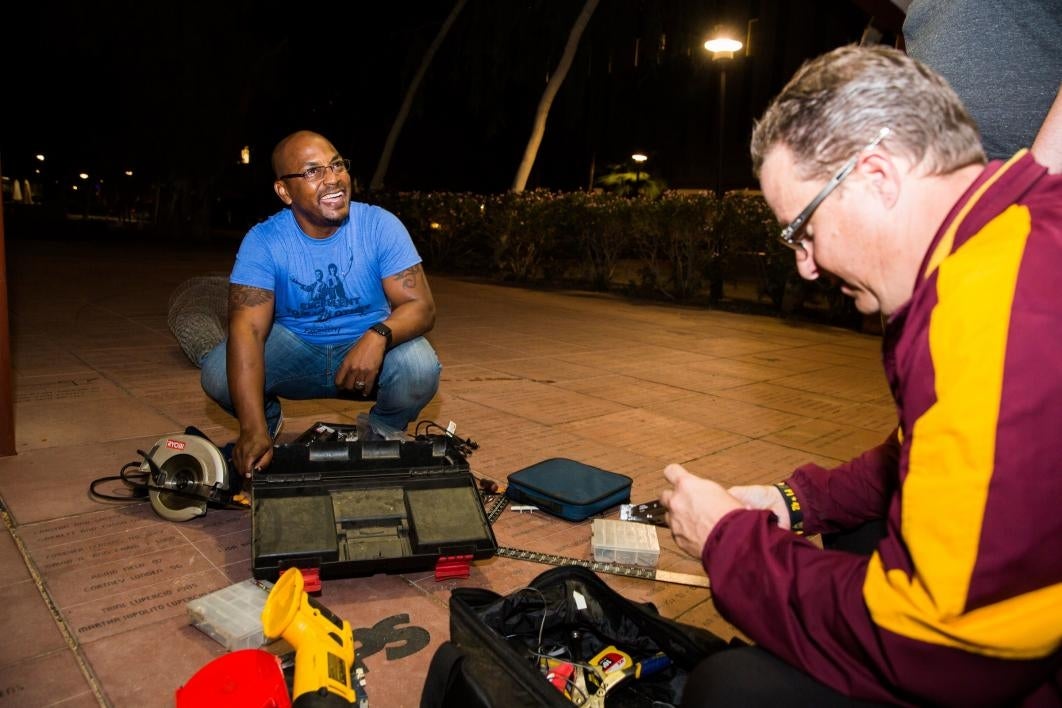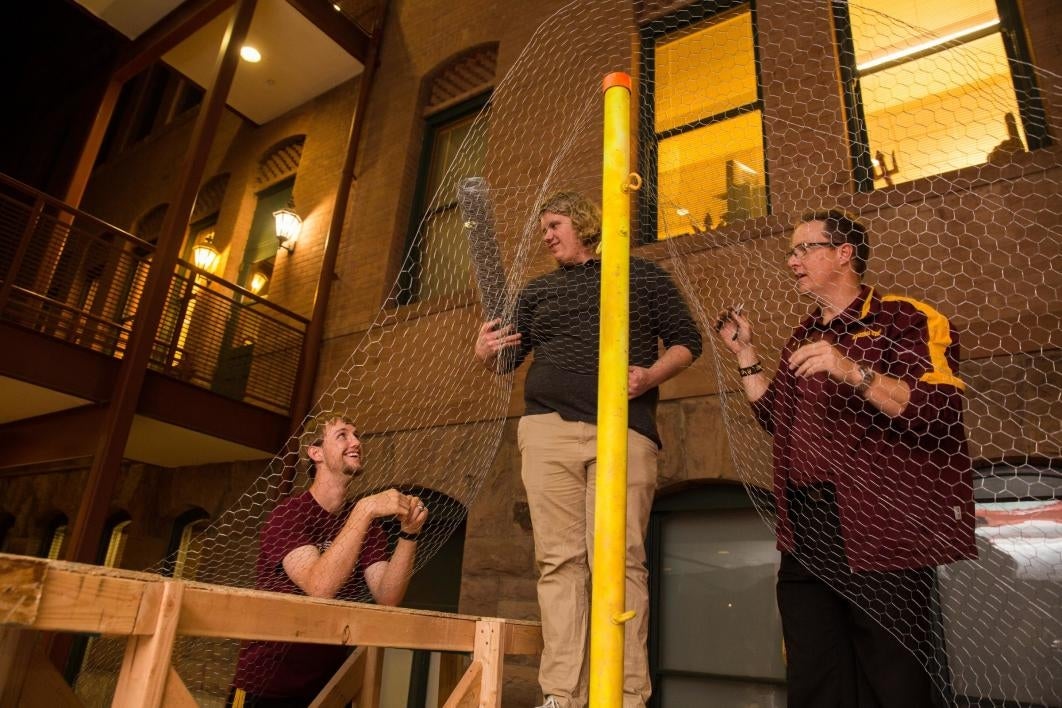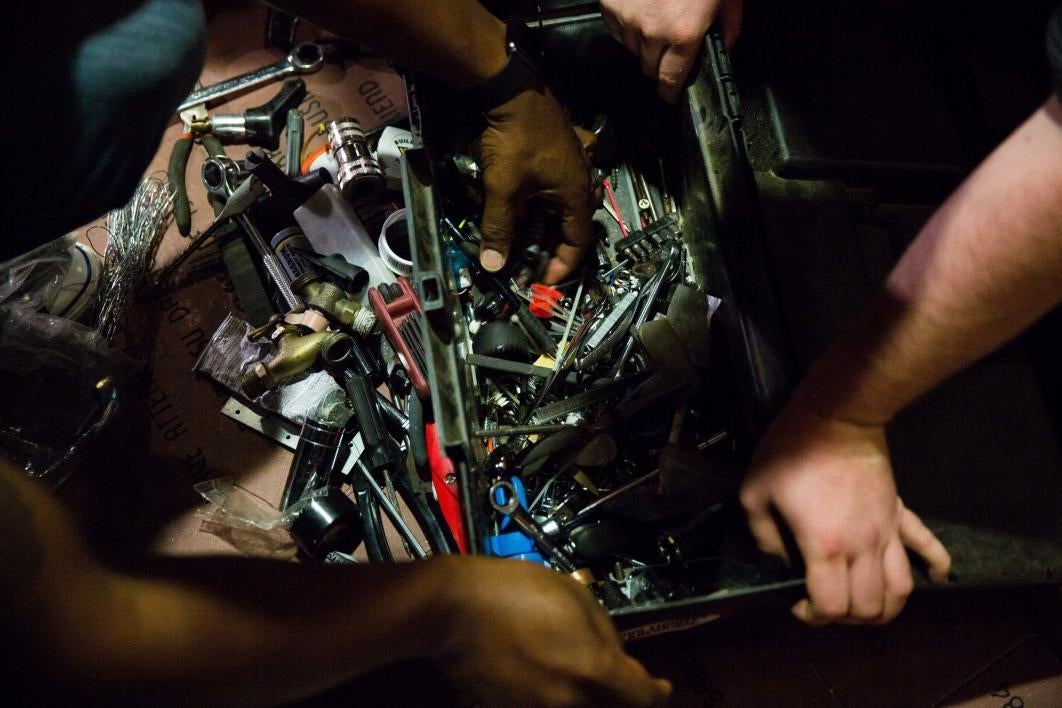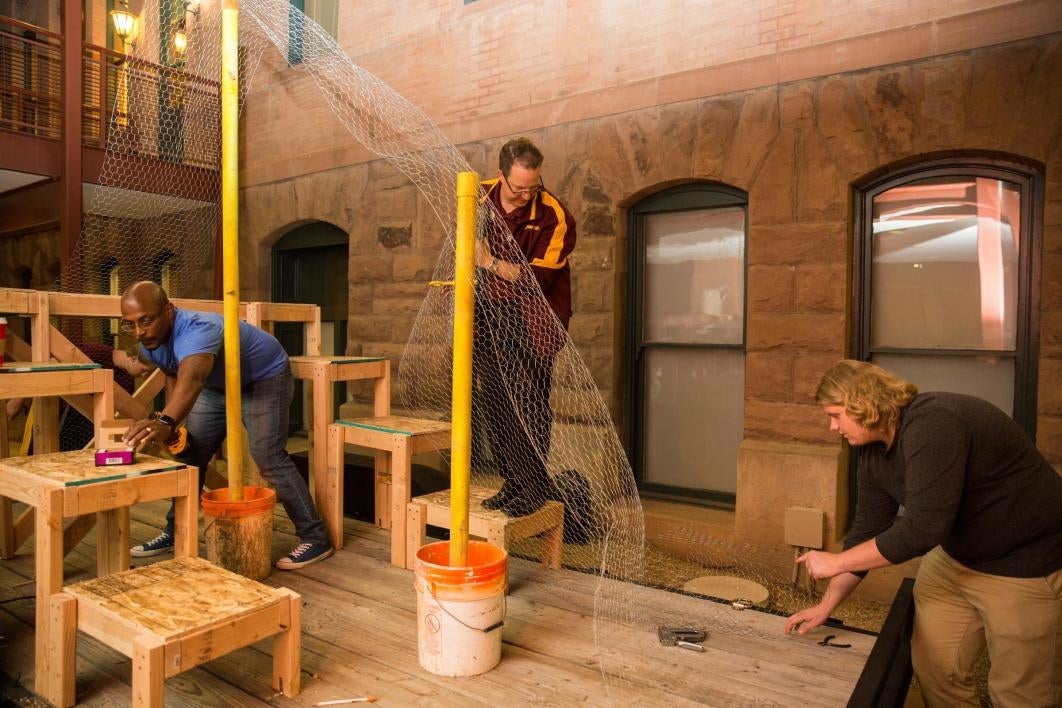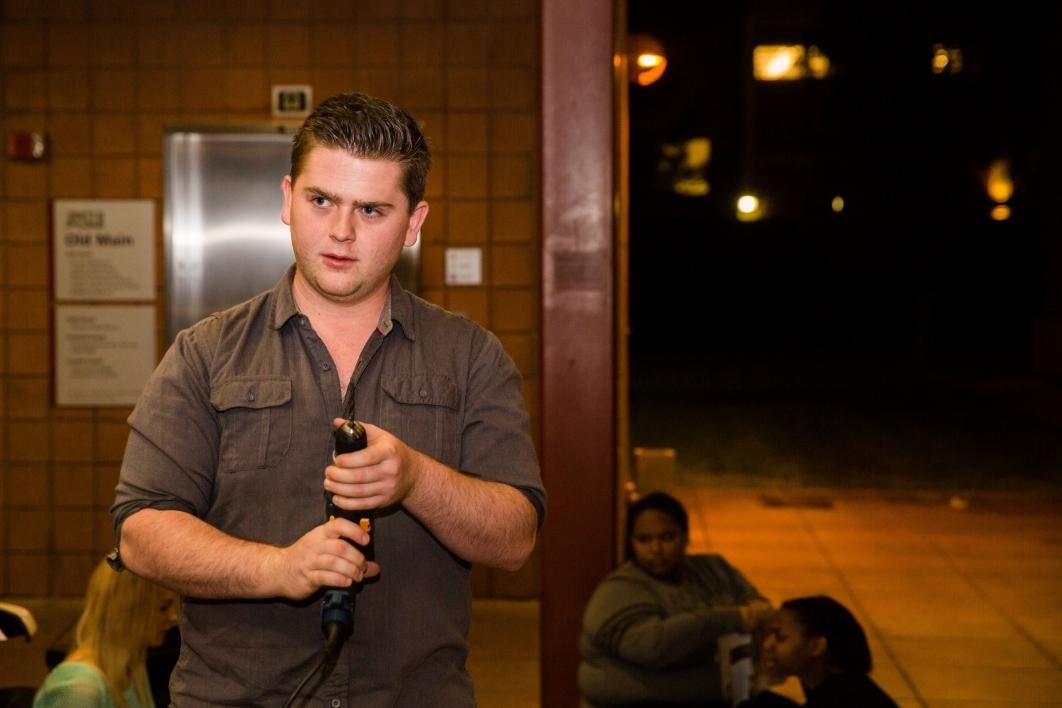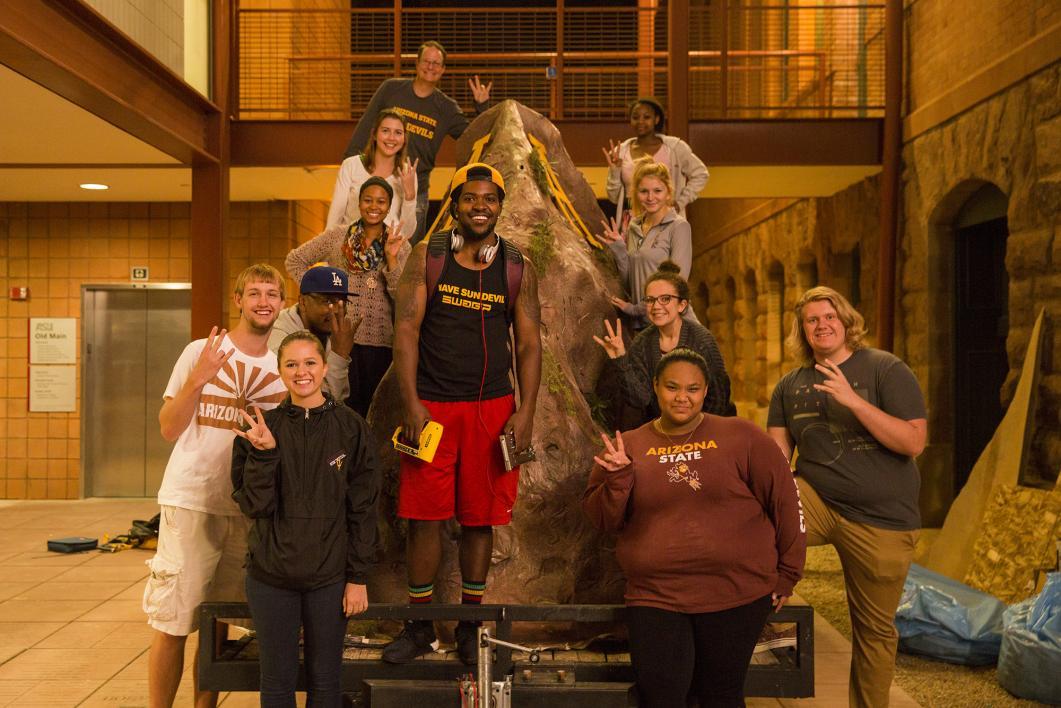After the sun has set, a small band of students and one university staffer gather in the darkness behind Old Main to build a float for the Homecoming Parade.
They set up a sound system for motivational dance music and get to work shredding old magazines for papier-mâché and screwing together 2x4s.
“We’ve got a lot to do before Friday,” said Dan Turbyfill, special-events manager for the Arizona State University Alumni Association. Normally a float takes two weeks to build, according to Turbyfill, who has built eight of them. Now they have five days.
“We’ll get it done,” he said.
When Homecoming 2015 culminates Saturday with a parade, block party and football game, it will be the result of weeks of labor and thousands of people who work largely behind the scenes and in the dark.
“The event is more than a party,” said Terri Cranmer. “It’s actually a large-scale festival on a 14-acre site.”
Officially, Cranmer’s title is director of facilities operations at ASU Gammage, but every fall she morphs into the Wizard of Homecoming. The month before the Homecoming block party she works 12-14 hours a day, seven days a week. ASU Gammage runs the operational logistics for the event.
When the Homecoming block party began 12 years ago, 20 departments, colleges and groups participated. Now, more than 100 take part, according to Cranmer.
“With such a large event what we do is build an infrastructure, so that the various ASU entities can just show up, plug in and show off why ASU is a leader in innovation and one of the most ambitious universities in the country,” she said. “Many departments ... have fabulous, experienced event coordinators, but some departments only have volunteers for general planning their site and activities — so many are operating a tad out of their comfort zones. Our job is to support them and make them feel like they can do this, have their department shine, and make a great impression on their visitors.”
By the numbers it’s a whopping effort to welcome the hordes who descend on campus. Nine sustainable water stations. Three first-aid stations. Four stages. More than 200 signs and banners.
Talent has to be scheduled. Traffic barricades have to be ordered and set up. The ASU fire marshal, police, parking office and environmental health and safety personnel have to be in the loop, as do Tempe police, fire and EMTs. Facilities management ensures there is plenty of power, stakes are pounded safely, and the campus is clean. The university groundskeepers have to time their meticulous care around the event.
“We mostly work hard not to louse up their fabulous work,” Cranmer said.
Service teams work before, during and after the event, staffing water and first-aid stations, delivering ice, grabbing meals for volunteers, distributing fire extinguishers, and running bins of recyclable materials to recycling stations.
Back in the darkness behind Old Main, sophomore Jamie Coe sat on the ground tearing up old magazines into strips for papier-mâché for the float. The end result will be a model of “A” Mountain, with different events from ASU history along the trail to the top, like the 1987 Rose Bowl win.
This was Coe’s second float. “We’re running a little late,” she said. “Actually, we’re running a lot late. But we’ll get it done.”
Samantha Hernandez, a part of the Student Alumni Association, also sat on the ground tearing up about 100 magazines, she estimated.
“I thought (building a parade float) sounded pretty cool, so I wanted to help,” she said.
Freshman Corrina Williams signed up because “it seems interesting and fun to do.”
They work from 6:30 until about 10 at night. Even though none of them knew each other before the float project, it’s a bonding moment.
“At first everyone is pretty quiet; then everyone is working together and laughing,” Hernandez said.
The “A” Mountain design was one of three submitted to the Student Alumni Association. They weren’t going for an accurate geologic model on the float.
“You can kind of see ‘A’ Mountain,” Turbyfill said, pointing at the lumber frame. Clearly he has a vision in his mind, even if others find it difficult to share at this early stage.
“We’ll finish the frame and chicken wire tonight.” He looked at his watch. “Probably.”
The first roll of chicken wire is lifted over the center support poles and maneuvered in place.
“I say we staple it there,” said freshman Cameron Cañetes.
“Hey, we’ve got a mountain,” Turbyfill said.
“And we shall make it so,” said sophomore Gregory Nairn. It wasn’t Nairn’s first float — he built a couple in the military — and he seemed like he knew what he was doing. “Not really,” he said.
“There’s a concept drawing,” Turbyfill said. “Somewhere.”
See more photos from Homecoming week here.
More Sun Devil community

No limits to a mother’s love, a wrestler’s determination
Judy Robles was washing dishes in the kitchen of her California home and keeping an eye on her young son, who was playing in the park that backed up to the house.She looked down for a second, maybe…

A symphony of service: Iraq War vet and ASU alum finds healing through music
At the age of 30 and only one credit away from obtaining his bachelor’s degree in piano performance, Jason Phillips could no longer stifle the feeling that he was stuck. He was teaching at a…

ASU first-gen college student is a leader in sustainability, social justice
Born and raised in Phoenix in a single-parent household, Mauricio Juarez Leon faced struggles growing up that included poverty, malnutrition, domestic abuse and limited resource access. And at the…

